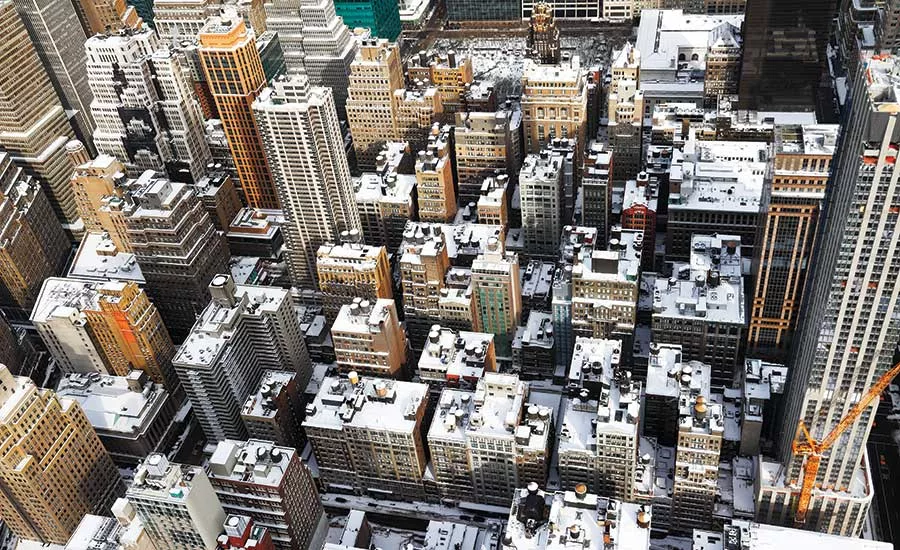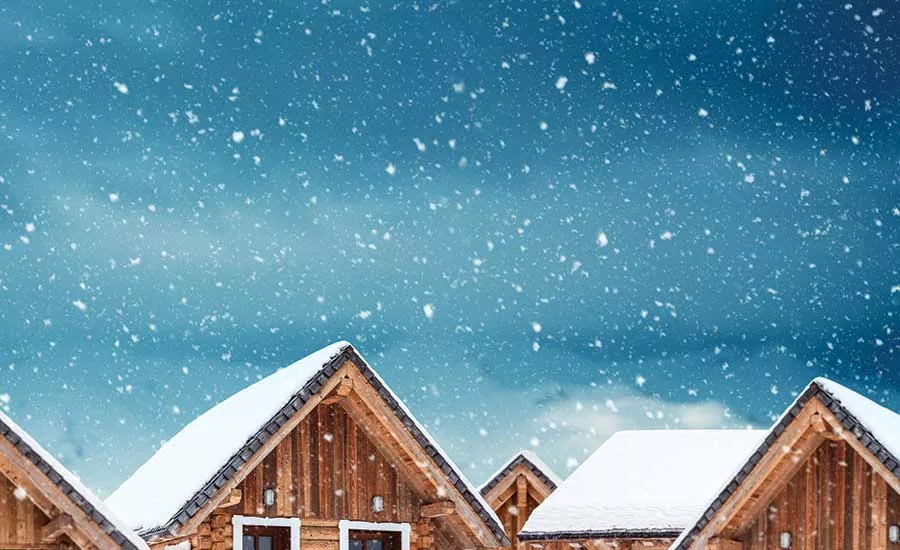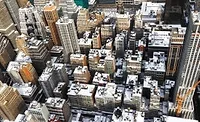Prepping a Commercial Roof for Winter
The roof is a commercial building's first line of defense from natural hazards.


Roofing in colder temperatures requires roofing contractors to take extra care to ensure the right roofing materials are stored properly.
The roof is a commercial building’s first line of defense from natural hazards. In areas with climates that cause severe or even moderate winter weather, a winter commercial roof maintenance program should be an important concern for facility managers and building owners. The extreme conditions can cause a lot of damage to many different areas of the roof and building, especially if the roof hasn’t been properly maintained and prepped.
A winter preparation maintenance program will help identify potential issues that can become problematic due to thermal movement in the building during the winter season, and issues related to snow and ice accumulating on the roof. Ideally, problems can be fixed under better conditions when the roof is dry as opposed to emergency repairs that ultimately require a return visit from a commercial roofing contractor to fix the damage. Routine maintenance and implementing a winter-prep program decreases the risk of damage to the roof as well as reduces interior damage due to water entering the building through a leak in the roof.
Roof Inspections
Because commercial roofs are constantly exposed to the outdoor elements, it’s essential for a professional commercial roofing contractor to perform routine inspections. The summer heat can cause cracks in the membrane while heavy winds can cause wind uplift. Often this damage goes undetected until winter when the roof may sustain even further damage from heavy snow loads or ice expansion.
To reduce the risk of leaks — or worse, a whole roof section collapsing — it’s imperative to identify and eliminate all defects and problems of a building’s roof before winter begins. Commercial roofing experts recommend conducting at least two roof inspections per year, one in the fall to get ready for winter, and one in the spring to find and correct any damage the winter weather caused.
Every part of the commercial roofing system should be inspected: the decking, insulation, any underlayment, the surface membrane, flashing, all roof vents, drainage pipes and gutters. A failure at any point could cause damage. Membrane failures, such as split seams, cracks, holes, buckles and blisters are the most common problems, but out-of-place fasteners, defective flashing, clogged drainage systems and rooftop debris can also hurt roofs during the cold season.
Roof Cleaning
Once a layer of snow comes in, it can bury access points making it more difficult to get to the roof’s gutters and drains, therefore a fall inspection is pertinent. During this inspection, it’s important to discard leaves, twigs and debris that are covering the roof’s surfaces. Additionally, be sure to remove obsolete equipment that has the potential of causing damage in high winds, and look around for any other loose parts that can wreak havoc in high-wind conditions.
When leaves and debris collect in the gutter system, it eventually will create a clog in the downspouts and the rainwater will overflow the gutters, damaging the roof and potentially the exterior of the building. The added weight of the wet leaves and water could also cause the gutters to pull loose from the anchor point and collapse.
To prevent these problems and unforeseen repair costs, make sure to keep the gutters relatively clear through the fall season. Once the trees in the area are bare, it’s an optimal time to do a thorough roof cleaning.
Snow and Ice Removal Plan
If the building is located in an area where snow and ice are common, it’s a good idea to create a roof snow and ice removal plan. Identify areas that are prone to drifting snow and ice accumulation, and pay special attention to those areas during the winter season.
If snow isn’t promptly removed from the roof, the snow can melt during the day and then re-freeze during the evening in what’s known as the freeze/thaw cycle. After this cycle takes place, the snow will develop into layers of ice and become far more difficult to remove in addition to weighing considerably more than fresh snow. During the freeze/thaw cycle, ice has a tendency to form around roof drains and restrict proper drainage. This becomes a serious hazard not only because of the additional weight it places on the roof, but because as the snow and ice melts, water can slowly seep into cracks and crevices in the roofing membrane and then freeze, expanding the openings and causing additional damage and costly repairs. It’s also notable to check on the roof periodically to make sure that any melting snow and ice is draining properly and not ponding on the roof surface.
Inspection Team
Depending on the slope of the roof and the ease of access, inspections sometimes can be done by the building owner or the facility manager, but in many cases, it’s recommended to hire a professional commercial roofing contractor to make sure the job is done safely and correctly.
Beyond professional inspections, facility maintenance staff should be responsible for removing debris from the roof as well as unclogging drains and gutters. Additionally, a staff member should always be on the lookout for damaged roofing systems, as they visit the rooftop far more frequently than professional commercial roofing contractors. If any issues are noticed throughout the year, it’s highly recommended to repair them quickly rather than waiting for a larger issue to arise.
Preventative Maintenance
The best way to avoid roof-related problems and strengthen weather resistance is through a regular care and preventative maintenance program. Proper maintenance prolongs the life of the roof and in many instances, allows for repair instead of replacement when a problem is identified. The frequency of inspections for routine maintenance depends on several factors, including the age of the roof, recent weather events, rooftop foot traffic and conditions identified during previous inspections. That said, scheduling inspections at least every six months is an effective way to make sure that other impending business does not sidetrack them.
Conclusion
With both preventative and routine maintenance in conjunction with a winter preparation program, building owners and facility managers can extend the longevity of the roof and safeguard it against severe damage. The best way to mitigate winter damage to a commercial roof is to hire a professional commercial roofing contractor who will conduct a thorough inspection and make any repairs needed before the winter weather arrives. Prioritizing quality roof inspections will provide peace of mind when rough weather arrives.
Looking for a reprint of this article?
From high-res PDFs to custom plaques, order your copy today!




